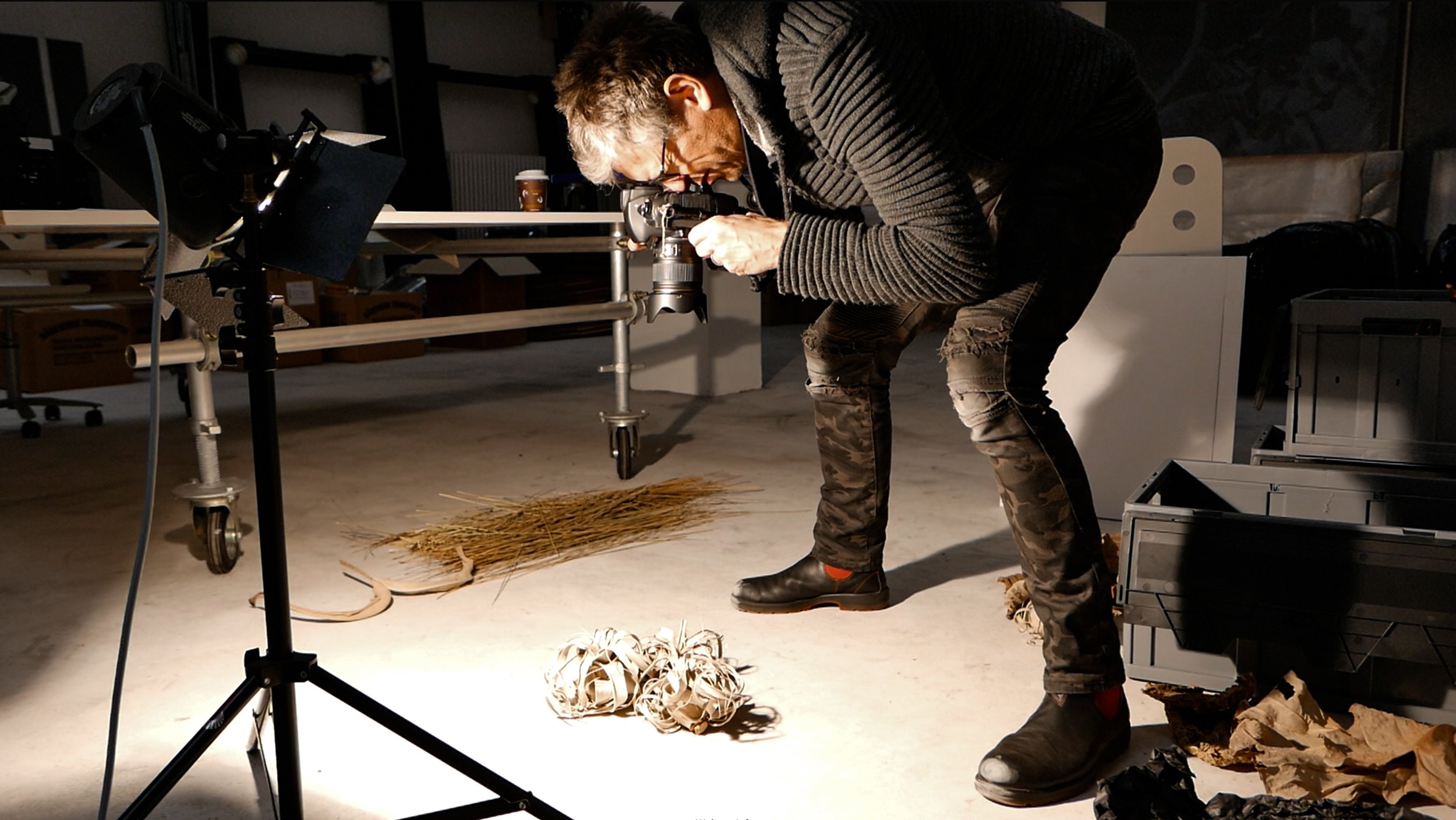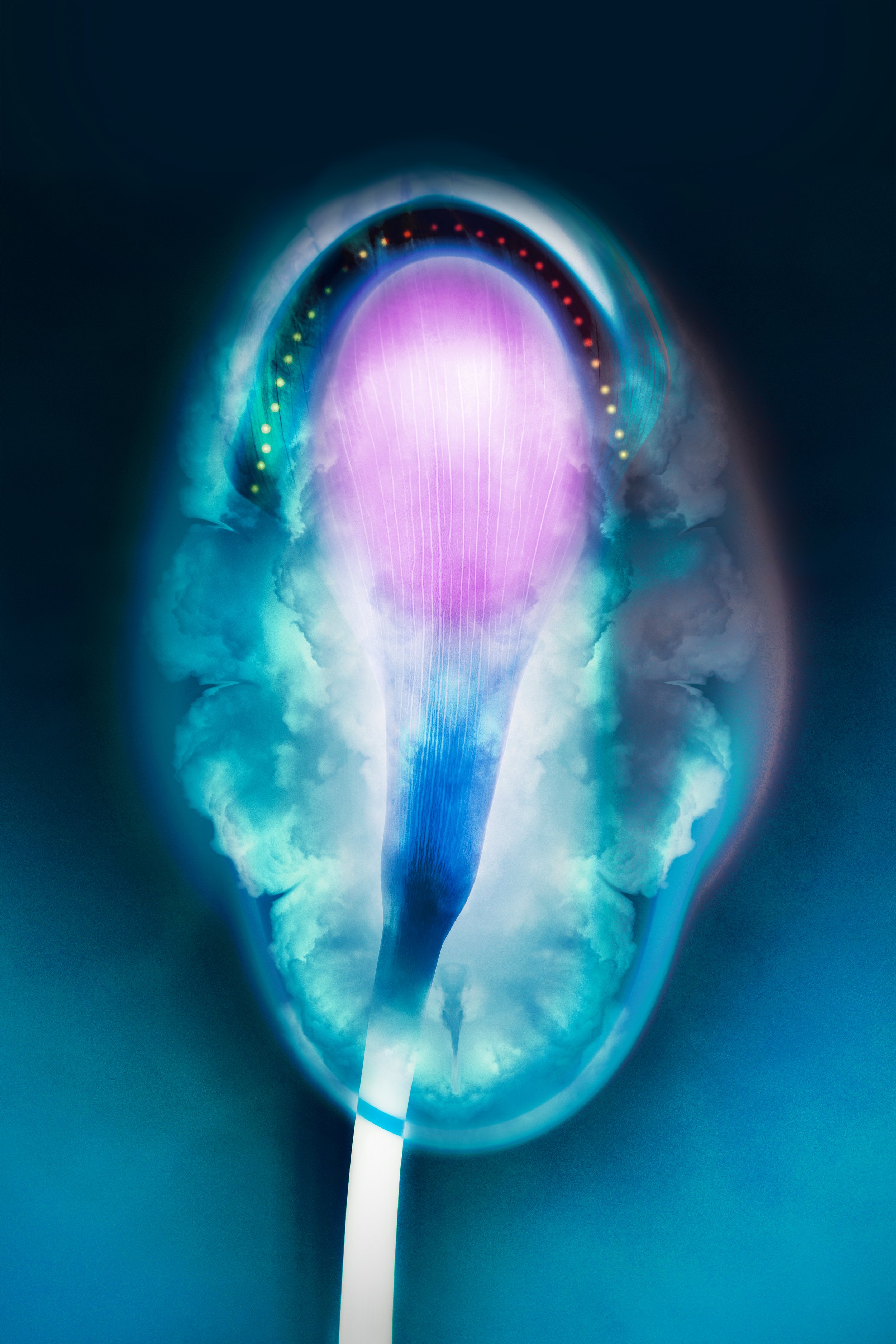Interview
Thomas Bienert
Thomas Bienert is a German photography and digital artist based in Düsseldorf, Germany. He calls it being ‘a storyteller with camera and computer.’ His conceptual work is about what happened the day before life changed radically for a person. He creates abstract portraits of these people to remind us of a day nobody remembers anymore.
His very colourful artworks are shown at exhibitions and fairs globally. He is represented by Galerie Ahlemann, Duisburg and globally by Galerie Makowski, Berlin.
What is your background and how did you start your journey in the art world?
“I studied visual communication where I learned a lot about perspectives, drawing, photography and typography, and of course a lot about art and design. This lead to a job in advertising. I started as an Art Director and soon became a Creative Director where I created concepts for national and international clients. I got to know many very good photographers and film directors and had the opportunity to supervise shoots around the globe. Though I loved to do these advertising jobs, I hated to always make corrections of my work just because clients wanted it. This is the reason I always did my own art around my job, when I found the time for it, even though there was not much of that in the beginning. I always enjoyed photography but also did a lot of painting and drawing, and I also wrote three books. I was always looking for ways to explore my ideas. During 2010 I started concentrating on photography only, and it got more intense from year to year. My camera equipment improved and my software skills for retouching and editing evolved. Since 2018 I have been focusing on art, specifically on photography with digital art. I had space at a photography fair in my hometown called PhotoPopUpFair, where I displayed six works, and received so much positive feedback, that I was encouraged to carry on. From that day on, I’ve kept going.”
What would you say inspires you most?
“Firstly, I would say stories. I am always fascinated with tragedies but also stories with happy endings. In my research I have found stories you can hardly believe. You don't need to create touching stories, they are all already there. Another thing that inspires me greatly is nature. It inspires me each and every time. Every cloud, every tree or leaf, all the fantastic shapes that nature creates, is an inspiration. I love to be in the woods where I find many things I need for my work, and I love to spend time at the coast. I have taken millions of cloud and nature shots. Most of them very similar, but it is the base for all my work.
Another source of inspiration is work of other artists. I love browsing through exhibitions and Instagram, and I use these a lot.”
JIMI HENDRIX In the garden of the Samarkand Hotel the day before he died
“Technically, my work is a cross-over of photography and digital art. The base is always different photographs I mix together. Conceptually, I would say, I tell stories. I always focus on humans, how they behave, how they feel. I want people to feel what someone would be feeling in that specific situation. I want people to feel for the person, to immerse themselves in that person’s situation at that point in time. I see myself as a storyteller using camera and computer.”
What themes do you pursue? Is there an underlying message in your work?
“I am very interested in what we as humans do on this planet and in what happens to us. Our world is very media-driven. We have good knowledge of so many visuals regarding certain events or circumstances, but I want to add new ones to it. For example, we all remember 9-11. We know all the images from that day and afterward. But we don't remember the day before. I'm interested in this day. How was the world for a person when the big change had not yet come?
My work is about remembering a day, everybody forgot. To portray the story of a person in a world that doesn't exist for him anymore. I do what can't be done in reality, I turn back time. We all know reviews but that's not my work. Instead, I use a split second, a mood, or just one action of the day before, to do a portrait of the person. So then people start to think: ‘What did I do on that day?’ Getting even deeper into it, one could ask: ‘When will be my DAY BEFORE?’ We don't know the future and so we can't judge the present. My works are about time. I tell emotional stories of people not knowing, but then how we learn to think about ourselves, about our relationship to life, and our relationship to time. Finally, it is about contemplating the last day on earth. This said, it's not about dying, it's positive. Live now, you don't know what will happen tomorrow. This is my main concept - ‘THE DAY BEFORE’.”
EVA LIPINSKA The day before the Concorde crashed onto her hotel
What is your creative process like?
“This is how I do my abstract portraits -
First I look for a human story that touches me. Always based on my concept THE DAY BEFORE, I do research via internet, print media or do interviews with the people I want to portrait. When I have found out what had happened the day before that person's life has changed radically, I write it down in a short story. This short story will be on the back of every image I create, so you will always find the story behind the image.
Then I start shooting or look what's in my stock. All used photos are mine and shot by me, so there are no copyright complications. Mainly I shoot natural elements like flowers, leaves, trees or other shapes and patterns that are interesting to me. But I also use technical elements and mix them. My shoots are sometimes still-life shoots in my studio and sometimes shot on the road whenever I see anything interesting. I have a huge collection of things, mainly natural.
Finally comes the longest part of the process, the creating of the image on the computer. I mash up many photos in a sandwich-style in photoshop. Many layers with different skills get enlarged by different colours that I use as coloured light. In this mess I search for an impression that tells my story. I often get many different images out of one sandwich of images, but only one is the special one that tells the story. This process can take days, weeks or months.
Then I do a test print to see how it looks in real life. If I am happy, I do a print in real size.”
CHRISTINE JORGENSEN The day before a Danish doctor helped him to transgender
“Although I mainly work as a photographer, I am most influenced by people like Basquiat and Christo. Basquiat because of his colourful and graphic way of telling stories, and Christo because of his simple but extraordinary fascinating concepts. I love each and every work of both of them, more than any other art.
The photographer that influenced me most is Ernst Haas. His strong colours, his blurry motion in his images which make them look abstract, it’s all absolutely fantastic and still looks very modern to me.”
In what way do you see an artist's role evolving in society?
“Digital devices and technologies help more people to create art than in former, ‘analog’ times. That is a great danger as you can see in the music industry. Now everybody can make music. That kills the magic of it. And when everybody can do it, it loses its value. The prophecy of Andy Warhol, that everybody will be famous for 15 minutes, becomes reality. Art will be the next genre. Technicians and designers will be the artists of the near future, and I'm not sure if they have a message, I fear it's all more about decoration.
Nevertheless I do hope that artists play an important role in our future society, but these artists can not be compared to artists as we know them today. It's all science fiction that we live in now. NFTs, VR, AR and their developments will change everything. It is a very interesting time we live in, but it is also like the old REM song: ‘It's the end of the world as we know it.’”
Have you had any noteworthy exhibitions you'd like to share?
In the three years of being an artist I enjoyed being part of group shows in London, Zürich, Berlin, Milano, Hongkong, Basel, Paris, Dubai, just to name a few. Each one was a big step forward for me and I'm happy I did it. In 2021 showing 4 works in New York, 3 in Hongkong and 2 at Basel Volta were the highlights up to now. But the aim is still my first solo show.






